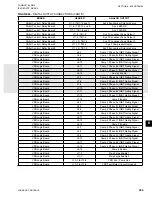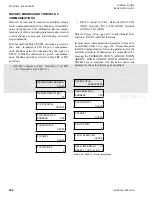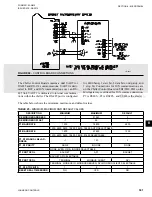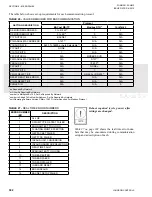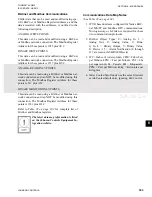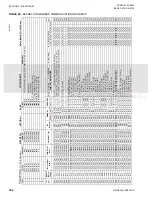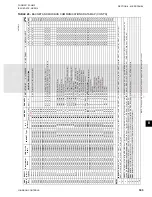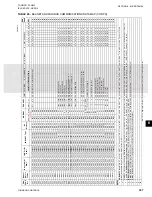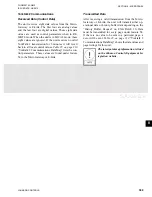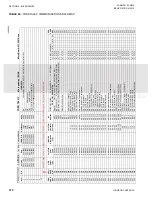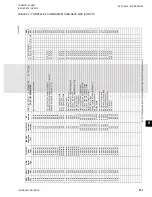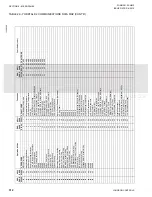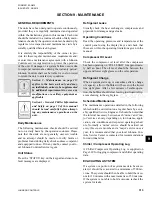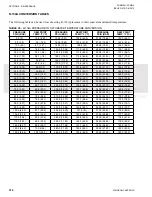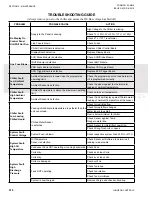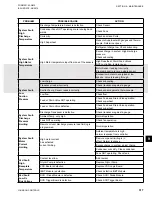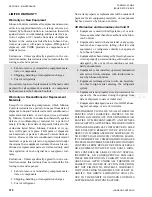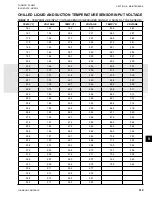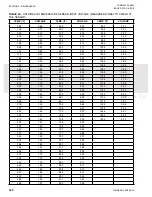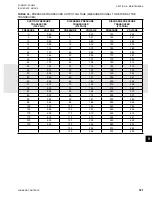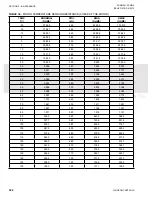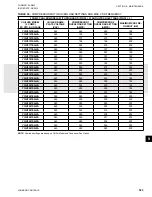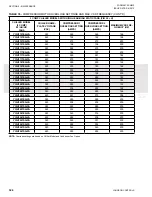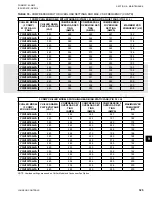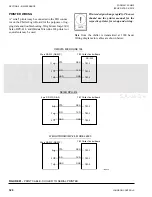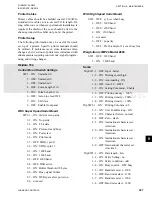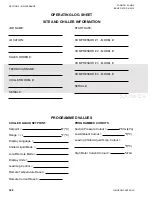
JOHNSON CONTROLS
313
FORM 201.23-NM2
ISSUE DATE: 3/9/2015
9
SECTION 9 - MAINTENANCE
GENERAL REQUIREMENTS
The units have been designed to operate continuously,
provided they are regularly maintained and operated
within the limitations given in this manual. Each unit
should be included in a routine schedule of daily main-
tenance checks by the operator/customer, backed up by
regular service inspection and maintenance visits by a
suitably qualified Service Engineer.
It is entirely the responsibility of the owner to pro-
vide for these regular maintenance requirements and/
or enter into a maintenance agreement with a Johnson
Controls service organization to protect the operation
of the unit. If damage or a system failure occurs due
to improper maintenance during the warranty period,
Johnson Controls shall not be liable for costs incurred
to return the unit to satisfactory condition.
Section 9 - Maintenance on page
applies to the basic unit only and may,
on individual contracts, be supplemented
by additional requirements to cover any
modifications or ancillary equipment as
applicable.
Section 1 - General Chiller Information
and Safety on page 19 of this manual
should be read carefully before attempt-
ing any maintenance operations on the
unit.
Daily Maintenance
The following maintenance checks should be carried
out on a daily basis by the operator/customer. Please
note that the units are not generally user serviceable
and no attempt should be made to rectify faults or
problems found during daily checks unless competent
and equipped to do so. If in any doubt, contact your lo-
cal Johnson Controls Service Agent.
Unit Status
Press the ‘STATUS’ key on the keypad and ensure no
fault messages are displayed.
Refrigerant Leaks
Visually check the heat exchangers, compressors and
pipework for damage and gas leaks.
Operating Conditions
Read the operating pressures and temperatures at the
control panel using the display keys and check that
these are within the operating limitations given in the
manual.
Compressor Oil Level
Check the compressor oil level after the compressor
has been operating on ‘FULL LOAD’ for approximate-
ly half an hour. The oil level should be between the
upper and lower sight glasses on the oil separators.
Refrigerant Charge
When a system starts up, or sometimes after a change
of capacity, a flow of bubbles will be seen in the liquid
line sight glass. After a few minutes of stable opera-
tion, the bubbles should clear leaving just liquid refrig-
erant showing in the sight glass.
Scheduled Maintenance
The maintenance operations detailed in the following
table should be carried out on a regular basis by a suit-
ably qualified Service Engineer. It should be noted that
the interval necessary between each ‘minor’ and ‘ma-
jor’ service can vary depending on, for instance, appli-
cation, site conditions and expected operating sched-
ule. Normally a ‘minor’ service should be carried out
every three to six months and a ‘major’ service once a
year. It is recommended that your local Johnson Con-
trols Service Center is contacted for recommendations
for individual sites.
Chiller / Compressor Operating Log
A Chiller/Compressor Operating Log is supplied on
Page 329 for logging compressor and chiller operating
data.
EVACUATING A SYSTEM
If a system or a portion of a system needs to be evacu-
ated, it should be evacuated to a minimum of 500 mi-
crons. The system should then be able to hold the vacu-
um for 10 minutes with a maximum rise of 50 microns.
If the system is not able to hold a vacuum, recheck the
system for leaks.
Summary of Contents for YCIV0157
Page 38: ...JOHNSON CONTROLS 38 FORM 201 23 NM2 ISSUE DATE 3 9 2015 THIS PAGE INTENTIONALLY LEFT BLANK ...
Page 42: ...JOHNSON CONTROLS 42 FORM 201 23 NM2 ISSUE DATE 3 9 2015 THIS PAGE INTENTIONALLY LEFT BLANK ...
Page 50: ...JOHNSON CONTROLS 50 FORM 201 23 NM2 ISSUE DATE 3 9 2015 THIS PAGE INTENTIONALLY LEFT BLANK ...
Page 333: ...JOHNSON CONTROLS 333 FORM 201 23 NM2 ISSUE DATE 3 9 2015 NOTES ...

